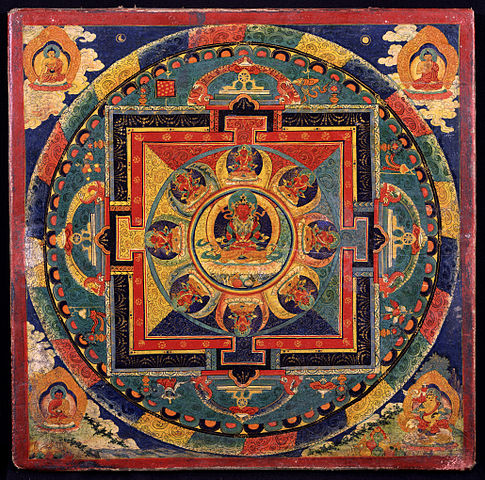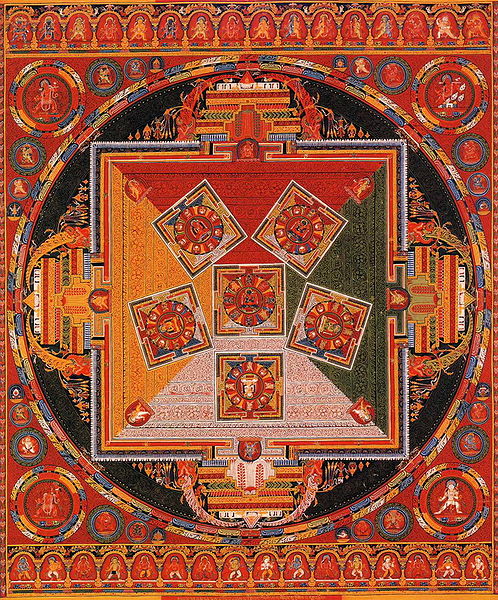Thammasat University students interested in art, history, Buddhist studies, Asian studies, Sinology, Tibetology, linguistics, art history, archaeology, cross-cultural studies, the history of the Silk Road, Italy, and related subjects may find it useful to participate in a free 5 August Zoom symposium on an Italian scholar of Tibetan art and culture. Giuseppe Tucci, his adventurous life, and his scholarly legacy is organized by the University Museum and Art Gallery, The University of Hong Kong (HKU) and coorganized by the Italian Cultural Institute.
The TU Library collection includes several books about different aspects of Tibetan history and culture.
As the event description posted online notes,
Giuseppe Tucci (1894–1984) was one of the few polymaths of the long twentieth century. His scholarship encompasses a wide range of topics that reach well beyond the narrow research field of Tibetology. Since then, the interest of a younger generations of Asian and foreign scholars in both religious and historical studies grew, and Tucci’s scholarly field continues to develop and to have impact in academia and beyond.
Bringing together scholars from across the world and from a perspective of cross-cultural exchange, our symposium aims to highlight Tucci’s lasting contribution to Buddhist studies, with a particular focus on his leading role in bridging the cultures of the West and East. We also hope to transcend the boundary between the academy and general public by analysing recent developments in Buddhist scholarship that have led to novel cultural as well as artistic expressions in an increasingly globalized world.
Join us for presentation of original and unpublished research on any topic related to Tucci, including his legendary career path, the translation and dissemination of his works in Asia, as well as the academic reassessment of his scholarly contribution. At the symposium, a group of nine scholars in Sinology, Tibetology, linguistics, art history, cross-cultural studies, and the history of the Silk Road discuss Tucci’s legacy, as well as the continuous relevance of his mode of research for today’s Western Buddhologists who follow in his footsteps by conducting fieldwork in Asian localities.
The event will be held on Friday, 5 August 2022 starting at 1pm Bangkok time.
No registration required. All are welcome.
Zoom Link:
https://hku.zoom.us/j/94560429398?pwd=WG1wT2hjVERxVGlOdkNVU2dFNjN5dz09
Meeting ID:945 6042 9398
Password:759593
For further information or with any questions, please write to the following email address:
lcindy@hku.hk
Among presentations will be discussions on Giuseppe Tucci and Chinese Buddhists; Giuseppe Tucci the Archaeologist; Tibetan Art in the Eyes of Giuseppe Tucci; Giuseppe Tucci: the Sinologist and the Enduring Relevance of his Methodology to Buddhist Studies; and In the Footsteps of Giuseppe Tucci through the Himalayan Malla Kingdom in Western Nepal.

Dr. Tucci was born in Macerata, a city in central Italy. He taught himself Hebrew, Chinese and Sanskrit before going to university
At age 18, he published a collection of Latin inscriptions.
After graduating from university, he traveled to India and settled down at the Visva-Bharati University, founded by the Bengali poet and Nobel Laureate Rabindranath Tagore. There Tucci studied Buddhism, Tibetan and Bengali, and also taught Italian and Chinese. He also studied and taught at Dhaka University, the University of Benares and Calcutta University. He remained in India until 1931, when he returned to Italy.
He was Italy’s foremost scholar of the East, with such diverse research interests ranging from ancient Iranian religion to Indian and Chinese philosophy. He taught primarily at the University of Rome but was a visiting scholar at institutions throughout Europe and Asia.
In 1931, the University of Naples “L’Orientale” made him its first Chair of Chinese Language and Literature. In 1933 he promoted the foundation the Italian Institute for the Middle and Far East, based in Rome.
The IsMEO was established as a “Moral body directly depending on [the Italian dictator Benito] Mussolini”.
Tucci visited Japan for the first time in 1936, and remained there for over two months until he attended at the opening of the Italian-Japanese Institute in Tokyo. Tucci traveled all over Japan giving Italian Fascist propaganda lectures on Tibet and “racial purity.”
Unfortunately, Tucci was a supporter of Italian Fascism and Benito Mussolini. He wrote popular articles for the Italian state that claimed that an authentic existence in touch with naturecould be found in Asia. According to one Tibetologist, For Tucci, Tibet was an ecological paradise and timeless utopia into which industrialized Europe figuratively could escape and find peace, a cure for western ills, and from which Europe could find its own pristine past to which to return.
As one researcher observed,
The scientist and explorer Giuseppe Tucci thus wrote about his journeys to Asia and his passion for travelling and experiencing “the far”: far from the banality and superficiality of everyday and massified relationships. And he really did go far, as he was the greatest expert in oriental studies that Italy has ever had and one of the best internationally recognised experts on Tibet, he was one of the first scientists in the world to explore the hitherto unexplored regions of Tibet and Nepal, he was an anthropologist, archaeologist, and he disseminated Asia culture, both ancient and contemporary – and he was a journalist too.
Tucci, the only legendary Italian oriental expert in the whole of Asia, gave the world a better understanding of the greatest Asiatic religions, and his critical editions and original translations of valuable texts in Sanskrit and in Tibetan opened up southern Asia to scholars. With his legendary scientific expeditions to Tibet, Nepal, Ladhak and Bhutan he opened up these countries to geographers and modern travellers.
His work of discovery, restoration and preservation of rare manuscripts, which are today kept in Rome in the Tucci Foundation of the Oriental Library of IsIAO, the former IsMEO (Institute for the Middle and Far East), safe from the inevitable dangers of the Asiatic climate, worms and rats – as specified in the descriptions of the microfilms that reproduce the manuscripts –, and from the even graver threat of destruction by man, due to both the Cultural Revolution when China annexed Tibet, and the greed of merchants and ignorant neglect, and his expeditions to the then almost inaccessible territories in the Himalayas, gave those countries a final place in history, and not only in the work of scholars. Moreover, following in the footsteps of his mentor Formichi, he updated the ways of studying oriental languages, with a first-hand understanding of the culture expressed by those languages, enriching the patrimony of knowledge of the world…
Although he never gave up his passion for Taoism and Lao-tzu, Confucius and Chinese language and literature, most of the time he dedicated to them was up to 1922. His extensive knowledge of that language and culture was useful for his famous comparative studies and his translations from Sanskrit and Tibetan, which he continued until the 1950s. He compared the Tibetan and Chinese versions of manuscripts to correct or complete the Sanskrit texts, the originals of which had been destroyed or lost…
Tucci’s particular interest was in Buddhist texts which had been translated from the original Sanskrit into Tibetan in the early centuries A.D., and taken to Tibet and from there to China and then Japan, and to south-east Asia by itinerant monks and learned men who wanted to spread the Good Law, the Dharma of the Buddha. And he became a Buddhist because, as he said,
“I found Buddhism much simpler. It is simply an ethical doctrine. Everything is based on sincerity and you are completely free.”

(All images courtesy of Wikimedia Commons)

